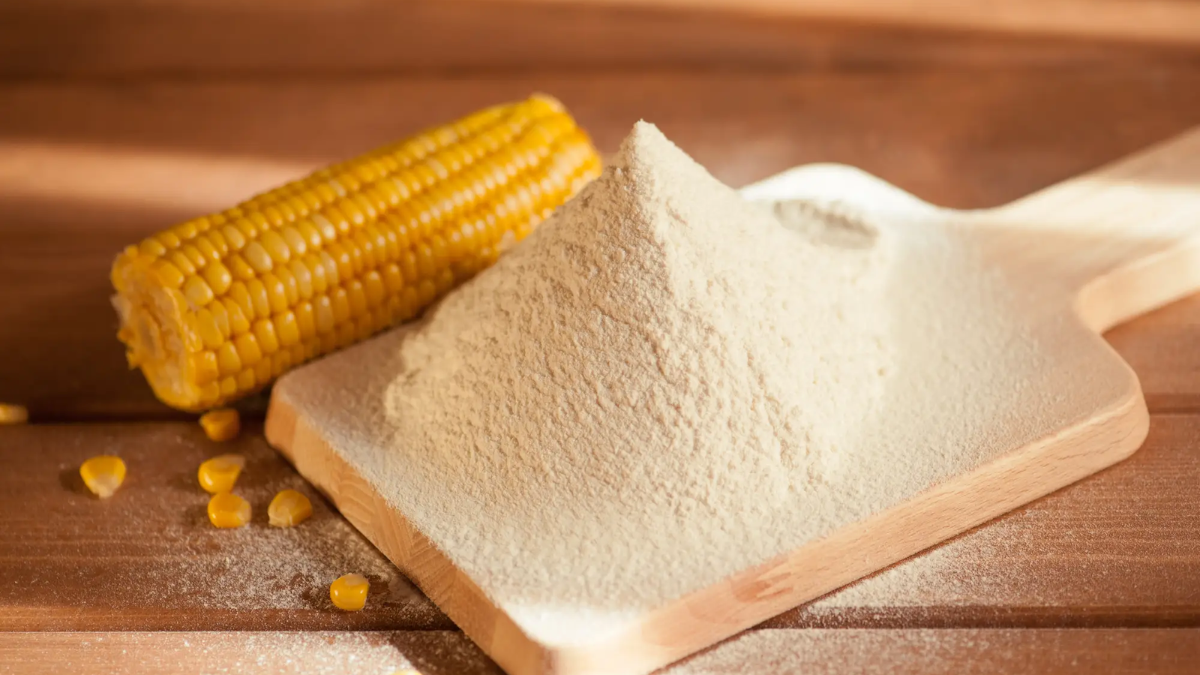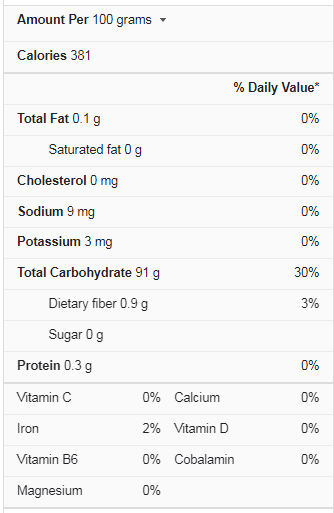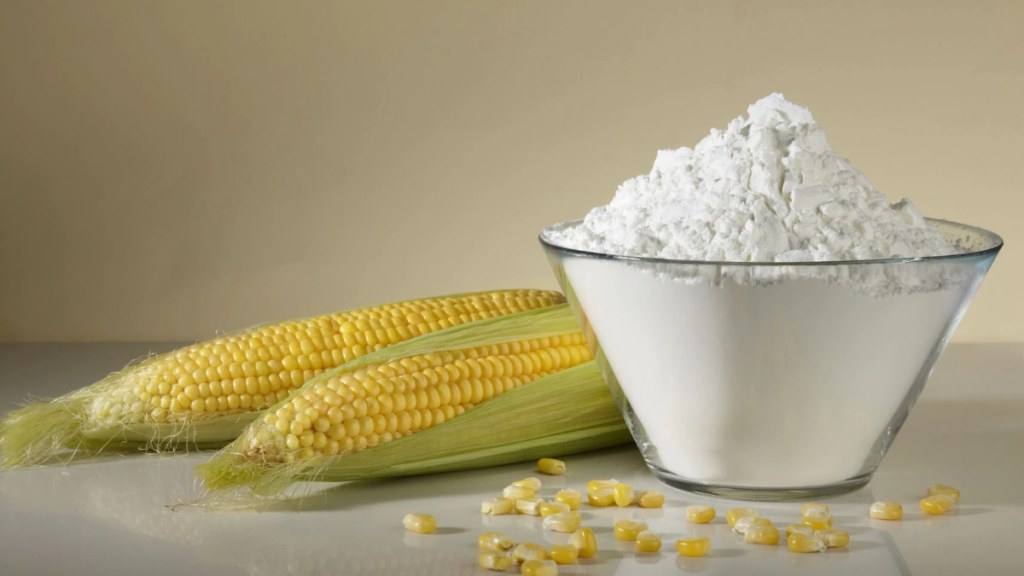Corn flour is a staple ingredient used in many kitchens around the world. It is versatile, gluten-free, and adds a distinct taste and texture to a wide range of dishes. But what is corn flour, and how is it different from other flour? This article will tell you what corn flour is and its properties, uses, and nutritional benefits.
So, whether you’re looking to add some texture and flavor to your baked goods, thicken up your soups and sauces, or create delicious and healthy gluten-free meals, this article will give you a comprehensive understanding of the world of corn flour. If you are a seasoned chef or just starting in the kitchen, this article will undoubtedly provide useful information on this versatile ingredient.
Most corn flour comes from dried yellow dent corn, with a small dent in the top of the kernel. You’ve probably seen flour in the grocery store’s baking aisle, but you’re unsure what to do with it. Its grittier cousin, cornmeal, frequently overshadows corn flour, but there are numerous reasons to keep this ultra-fine flour on hand.
Corn Flour Nutrition Facts
What is Corn Flour?
Whole dried corn kernels that have been ground into flour are used to make corn flour. Because it contains corn’s hull, germ, and endosperm, it is classified as whole-grain flour. Corn flour is usually yellow, but it can also be white or blue, depending on the corn used.
It has a fine and smooth texture, similar to whole wheat flour. Corn flour, like all flours, is frequently combined with a binder such as eggs to give baked goods and other foods shape and structure.
Flour has an earthy, sweet flavor when cooked, whether baked, fried, or grilled. Flour can be used in various recipes, including loaves of bread, muffins, waffles, pancakes, battered and fried foods, blinis, and more.
How to Make Corn Flour?
Making corn flour at home sounds intimidating, but it’s much easier than expected. The only ingredient you need is corn, which must be dried beforehand. Traditional methods involve drying corn under the sun, removing it from the cob, and passing it through a grain mill, but there’s a simpler way.
The type of blender you use is important, as the blades need to be powerful enough to grind the kernels. It would be best to have popcorn kernels and a high-powered blender like Vitamix or Blendtec. Your standard blender container and blades should work fine—but you may want to consider buying a dry-grains container for grinding whole grains.
- Add the kernels to the blender container until filled about halfway.
- Blend kernels on HIGH until a fine powder forms.
- Place in an airtight container or plastic zip-top freezer bag, refrigerate, and use within several days, or store in the freezer for six months.
Here are Four Culinary Uses for Corn Flour:
- Gluten-free baking: As gluten-free flour, corn flour is a popular choice for wheatless baked goods, from bread to waffles.
- Breading: In the Southern United States, corn flour has long been used to coat fried foods, such as shrimp. It adds a pleasant corn flavor and crispy crunch—without the grittiness of cornmeal.
- Chess pie: This classic Southern pie is even better when you swap the cornmeal in the custard for corn flour.
- Cakes: Mix all-purpose flour and corn flour in a stone-fruit upside-down cake.
What is the Difference Between Cornstarch vs. Corn Flour?
Cornstarch and corn flour have different appearances, textures, and uses, even though they are made from corn. Cornstarch is a chalky white powder that thickens sauces and stews. Cornstarch is made from the endosperm of the corn kernel, unlike corn flour, which is made from whole grains.
The endosperm’s starches are extracted, rinsed, dried, and milled into a fine powder. The hull and germ of the grain are separated and processed into other corn products such as corn oil and bran.
The distinction between flour and cornstarch is fairly straightforward in the United States, and cornstarch is known as Cornflour in the United Kingdom. It’s the same thing as cornstarch but with a different name. This is especially important to remember when making recipes, as mistaking one for the other can ruin your meal.
What is the Difference Between Corn Flour vs. Masa Harina?
The difference between corn flour and masa harina is the nixtamalization process. Corn kernels were soaked in alkaline water by indigenous peoples in Central and North America to remove the tough outer hull; this process, known as nixtamalization, also increased the availability of protein and vitamins in the corn. It’s the first step in making masa (corn dough) to make corn tortillas, tamales, and other dishes.
Masa harina (masa flour) is a dried version of fresh masa that works well if you don’t have access to fresh masa. Corn flour is whole corn kernels that have been ground. When Europeans first brought corn back from the Americas, they forgot to bring the nixtamalization technique, making it less nutritious and incompatible with traditional Mexican dishes.
What can be Used Instead of Corn Flour?
1. Cornstarch
The majority of people associate corn flour with maize flour. Although they are very similar, they are not the same thing. However, this does not rule out cornstarch as a viable substitute. Cornstarch, which has the same consistency as flour, can be used in place of flour.
It works best as a thickener, breading, or fried batter. However, it lacks flavor, so seasoning should be considered before using cornstarch instead of Cornflour. When replacing flour with cornstarch, use a 1:1 ratio. However, depending on the recipe, you may still need to mix your cornstarch with cold water. Baked goods will be more crumbly if this is used as a substitute.
2. Rice Flour
Rice flour is a great cornflour substitute, especially when used as a thickening agent for sweet baked goods. Because rice flour is stickier and finer than cornmeal, it should not be used in recipes that call for a crunchy exterior. Rice flour is a wonderful flavor enhancer in certain recipes, such as soups or muffins, due to its sweetness. It’s best used in baked goods and as a thickening agent. Use twice as much rice flour as Cornflour in a 2:1 ratio.
3. Cornmeal
When it comes to cornflour replacements, it’s no secret that using another corn-related product may suffice. You can get the same flavor profile as flour using cornmeal (or maize flour). Cornmeal can be used in place of Cornflour in a 1:1 ratio.
The most noticeable difference when using cornmeal is the coarser texture, which is great for fried foods, casserole toppings, macaroni, cheese, etc. You can food process cornmeal to achieve a finer consistency closer to Cornflour.
4. Whole Wheat and All-Purpose Flour
Whole wheat flour and all-purpose flour are both good substitutes for cornmeal. Remember that because these flours are not gluten-free, they may not suit all bakers and home chefs. Because most people have all-purpose or white flour on hand, corn flour substitute is the most common. Whole wheat is also a popular option because it contains significantly more nutrients than white wheat, and white flour does not affect the flavor or texture of the recipe.
On the other hand, Whole wheat flour can impart a malty flavor to your dishes. While it isn’t an unpleasant flavor, it may not be appropriate for the flavor profile you’re looking for. In a 2:1 ratio, or twice as much as the amount of Cornflour called for in a recipe, combine whole wheat flour and all-purpose flour.
5. Masa Harina
Masa Harina is a type of cornmeal popular in Mexico and Latin America. Masa Harina is made from organic corn that has been cooked, soaked in lime juice and water, then hulled and ground into a cornmeal consistency.
However, it’s a great cornflour substitute, especially if your recipe has a Mexican or Latin flair. For cornflour replacement, masa harina is typically used in a 1:1 ratio, but you may need to experiment depending on the recipe.
6. Rice, Potato, Tapioca, Or Kuzu Starch
You can’t go wrong with starches if you’re looking for a corn flour substitute. If you don’t have any, you can replace corn flour with rice, potato, yuzu, or tapioca starch. Remember that starches are best used as thickening agents in soups and sauces. Because potato starch tends to clump quickly, ensure you’re whisking quickly when adding it to your ingredients.
Kuzu (Kudzu) is a versatile herb with numerous uses, and it is thought to help with liver damage, heart health, and inflammation reduction. Kuzu is the way for those looking to add more unprocessed organic foods to their diet. These cornflour substitutes can be used in a 1:1 ratio to replace the required Cornflour.
7. Guar Gum
Another healthy and inexpensive thickening option is guar gum. When replacing corn flour in a sauce or soup recipe, only a small amount of guar gum is required. You’ll also benefit from the digestive properties of guar gum.
8. Sorghum Flour
Sorghum flour is gaining a lot of traction, especially among health foodies. This flour, made from sorghum grains, contains protein and antioxidants. It also contains important vitamins and minerals, such as magnesium, phosphorus, and B vitamins. When using it, it’s best to use sorghum flour as a thickening agent rather than a breading or coating agent.
What to Make with Corn Flour?
A versatile ingredient, corn flour may enhance the flavor and texture of many different foods. Corn flour can be used to bread fried fish or okra, or it can be mixed into waffles or pancake batter for a filling breakfast, or it can be baked into pieces of bread, muffins, or cakes. Corn flour can also be mixed with other flour, such as cornmeal, all-purpose flour, or whole wheat flour.
Conclusion
Corn flour is a pale white powder with no discernible flavor. It is finely ground white starch powder extracted from maize kernels, also known as corn starch or Cornflour. The starch is obtained from the kernel’s endosperm, while the flour is milled from the seeds. Cornflour is known by various names depending on the region, even though the manufacturing process is the same. Corn starch is the name given to it in the United States and Canada, while Cornflour is shown in the United Kingdom, Ireland, and some Commonwealth countries.
In France, Italy, Switzerland, and a few other countries, it is known as Maizena. All the food ingredients blend well with the flour and can be combined with wheat flour to reduce the gluten content in paella. Corn flour is a binding agent in puddings and other similar recipes in the culinary arts. Soups, stews, sauces, and other dishes are commonly used as thickeners. In Italian cuisine, corn flour is used as breading. Corn starch, milk, and sugar can make a simple pudding: pastries, cakes, and other sweet treats.



